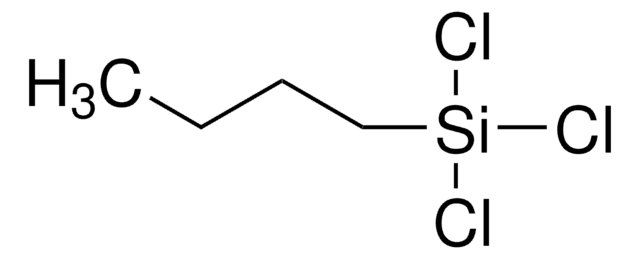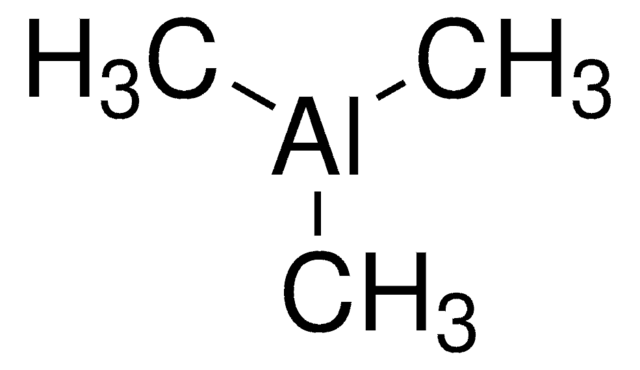446963
Trichloro(hexyl)silane
97%
Synonym(s):
Hexyltrichlorosilane
Sign Into View Organizational & Contract Pricing
All Photos(1)
About This Item
Linear Formula:
CH3(CH2)5SiCl3
CAS Number:
Molecular Weight:
219.61
Beilstein:
1739071
EC Number:
MDL number:
UNSPSC Code:
12352103
PubChem Substance ID:
Recommended Products
Assay
97%
form
liquid
refractive index
n20/D 1.443 (lit.)
bp
191-192 °C (lit.)
density
1.107 g/mL at 25 °C (lit.)
SMILES string
CCCCCC[Si](Cl)(Cl)Cl
InChI
1S/C6H13Cl3Si/c1-2-3-4-5-6-10(7,8)9/h2-6H2,1H3
InChI key
LFXJGGDONSCPOF-UHFFFAOYSA-N
Looking for similar products? Visit Product Comparison Guide
General description
Trichloro(hexyl)silane is a trichloroalkylsilane that can be used as a surfactant and a capping agent that functionalizes the surface atoms and attaches hexyl groups on silica substrates like silica nanoparticles (SiNPs).
Signal Word
Danger
Hazard Statements
Precautionary Statements
Hazard Classifications
Acute Tox. 3 Oral - Skin Corr. 1B
Supplementary Hazards
Storage Class Code
6.1C - Combustible acute toxic Cat.3 / toxic compounds or compounds which causing chronic effects
WGK
WGK 1
Flash Point(F)
183.2 °F - closed cup
Flash Point(C)
84 °C - closed cup
Personal Protective Equipment
dust mask type N95 (US), Eyeshields, Gloves
Regulatory Information
新产品
Choose from one of the most recent versions:
Already Own This Product?
Find documentation for the products that you have recently purchased in the Document Library.
The effect of alkyl chain length on the level of capping of silicon nanoparticles produced by a one-pot synthesis route based on the chemical reduction of micelle
Ashby SP, et al.
Journal of Nanoparticle Research, 15(2), 1425-1425 (2013)
Investigation on hole drift mobility in poly (n-hexylphenylsilane)
Kunimi Y, et al.
Solid State Communications, 114(9), 469-472 (2000)
Simple and facile approach to create charge reversible pores via hydrophobic anchoring of ionic amphiphiles
Sonu KP, et al.
ACS Applied Materials & Interfaces, 9(10), 9136-9142 (2017)
Tatsuya Sugihara et al.
Science advances, 6(51) (2020-12-18)
Adsorbed films often influence mechanical behavior of surfaces, leading to well-known mechanochemical phenomena such as liquid metal embrittlement and environment-assisted cracking. Here, we demonstrate a mechanochemical phenomenon wherein adsorbed long-chain organic monolayers disrupt large-strain plastic deformation in metals. Using high-speed
Our team of scientists has experience in all areas of research including Life Science, Material Science, Chemical Synthesis, Chromatography, Analytical and many others.
Contact Technical Service










